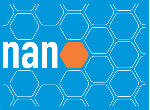Banca de DEFESA: RENNAN FÉLIX DA SILVA BARBOSA
Uma banca de DEFESA de DOUTORADO foi cadastrada pelo programa.DISCENTE : RENNAN FÉLIX DA SILVA BARBOSA
DATA : 30/09/2025
HORA: 13:00
LOCAL: Auditório 801 no 8º andar do Bloco B do Campus Santo André da Universidade Federal do ABC
TÍTULO:
Development of chitosan hydrogels containing modified cellulose nanostructures for removal and recovery of metals in contaminated water
PÁGINAS: 220
RESUMO:
The presence of potentially toxic elements, especially metal ions, in water has been a major environmental concern due to their effects on the health of living beings. The persistent effects of these elements on the environment and the difficulty of treating them are points of concern; therefore, the use of adsorption is an alternative approach to promote their removal and recovery. The use of three-dimensional porous structures in the form of hydrogels has the potential to remove these contaminants, and the incorporation of nanostructures is an alternative to enhance the sorption properties of hydrogels. This doctoral thesis aimed to develop chitosan hydrogels containing modified cellulose nanostructures for the removal of copper, nickel, cadmium, and chromium ions. Eucalyptus waste was used to isolate cellulose through alkaline and oxidative treatments. The treatments used proved to be adequate for removing non-cellulosic components and maintaining the cellulosic structure, as investigated by infrared and thermogravimetric analyses. Combined mechanical isolation was then performed using a ball mill and homogenization via ultra-Turrax to obtain cellulose nanostructures (CN). The combined isolation treatment was effective in obtaining cellulose nanostructures with a hydrodynamic radius of 360 nm and a morphological appearance similar to nanofibers obtained by conventional methods, demonstrating the feasibility of the proposed method. The CNs were then modified using three different routes: 1) succinic anhydride – CN-Suc, 2) carboxymethylation – CN-CMC, 3) EDTA dianhydride – CN-EDTA. The modifications were employed in order to introduce carboxylate groups to enhance the sorting properties of the nanostructures. Infrared and nuclear magnetic resonance analyses indicated effective modification for CN-Suc and CN-EDTA. The impact of introducing carboxylate groups can be observed in the zero charge potential, which decreased, tending to favor interaction with positively charged contaminants, especially at higher pH values. Sorption capacity was then investigated, and it was observed that a multielement system impacts properties due to its competitive nature. The pH evaluation illustrated that each metal ion has a better pH, with pH 5 for copper, pH 7 for nickel and cadmium, and pH 2 for chromium. The kinetic study indicated that chemisorption interaction is prevalent, although physisorption is also present. In addition, the limiting step for sorption is associated with diffusion in the external film. An isotherm investigation was performed, which showed that different models presented an adequate fit, suggesting that the interaction surface has a heterogeneous character in which both chemisorption interactions are prominent, but physisorption interactions are also present. The qmax values obtained by the Sips model were 1.83, 2.32, 1.67, and 1.96 for copper, nickel, cadmium, and chromium, respectively. The development of chitosan hydrogels was investigated using an experimental design to define the optimal balance between the concentration of chitosan and glutaraldehyde in the properties of the resulting hydrogel. The experimental design enabled the evaluation of the impact of chitosan and glutaraldehyde concentration on water absorption and metal ion adsorption properties using response surfaces, highlighting the formulation with 2% chitosan and 1% glutaraldehyde. The cross-linking of the structure can be corroborated by infrared analysis. The selected hydrogel (CH) had a water absorption capacity of 452% and a pore size of 9.5 μm. The cellulose nanostructures obtained were then incorporated into the chitosan hydrogel matrix to enhance the adsorbent properties. It was observed that different contents presented better sorption and water absorption properties, possibly indicating that dispersion and agglomeration effects impacted the properties of the composite hydrogels, highlighting the CH-5%CN, CH-3%CN-Suc, and CH-10%CN-EDTA formulations. The kinetic study for the hydrogels indicated the presence of chemisorption in the interaction with metal ions, with internal diffusion having a greater influence on the process. However, it did not represent the limiting step. The isotherm study illustrated that different models presented an adequate fit, suggesting that the interaction surface has a heterogeneous character in which both chemisorption and physisorption interactions are prominent. The qmax values obtained by the Sips model were 0.88, 1.44, 1.39, and 2.45 for copper, nickel, cadmium, and chromium, respectively. The results indicate that the developed materials have potential for application in the removal and recovery of metal ions and are attractive because they use environmentally friendly materials.
MEMBROS DA BANCA:
Presidente - Interno ao Programa - 1671275 - DERVAL DOS SANTOS ROSA
Membro Titular - Examinador(a) Interno ao Programa - 1760410 - JEVERSON TEODORO ARANTES JUNIOR
Membro Titular - Examinador(a) Externo ao Programa - 015.548.626-80 - Talles Barcelos da Costa - UNICAMP
Membro Titular - Examinador(a) Externo à Instituição - MELISSA GURGEL ADEODATO VIEIRA - UNICAMP
Membro Titular - Examinador(a) Externo à Instituição - EDCLEIDE MARIA ARAÚJO - UFCG
Membro Suplente - Examinador(a) Interno ao Programa - 1552290 - ANDRE SANTAROSA FERLAUTO
Membro Suplente - Examinador(a) Externo à Instituição - HELIO WIEBECK - USP
Membro Suplente - Examinador(a) Externo à Instituição - JULIO HARADA - IPEN




